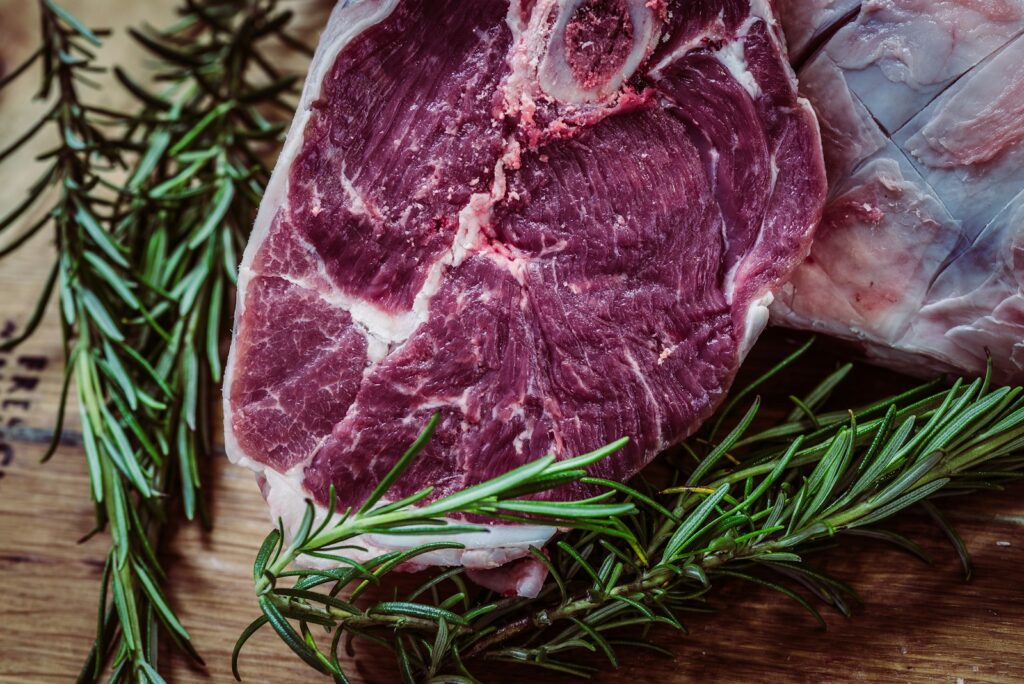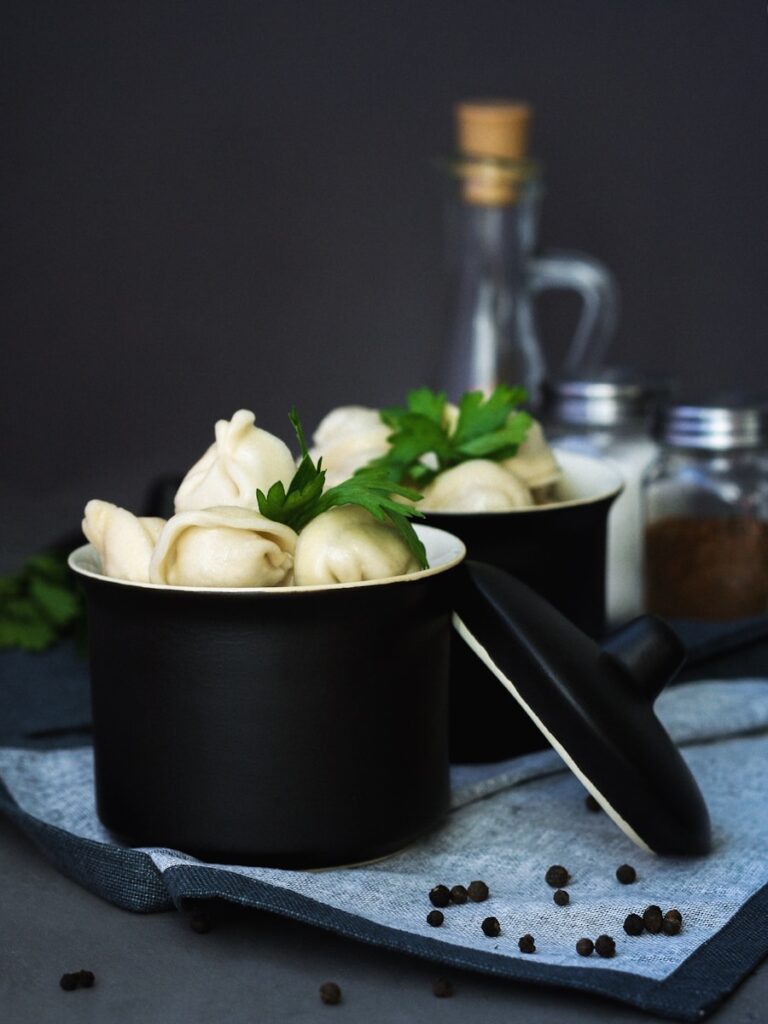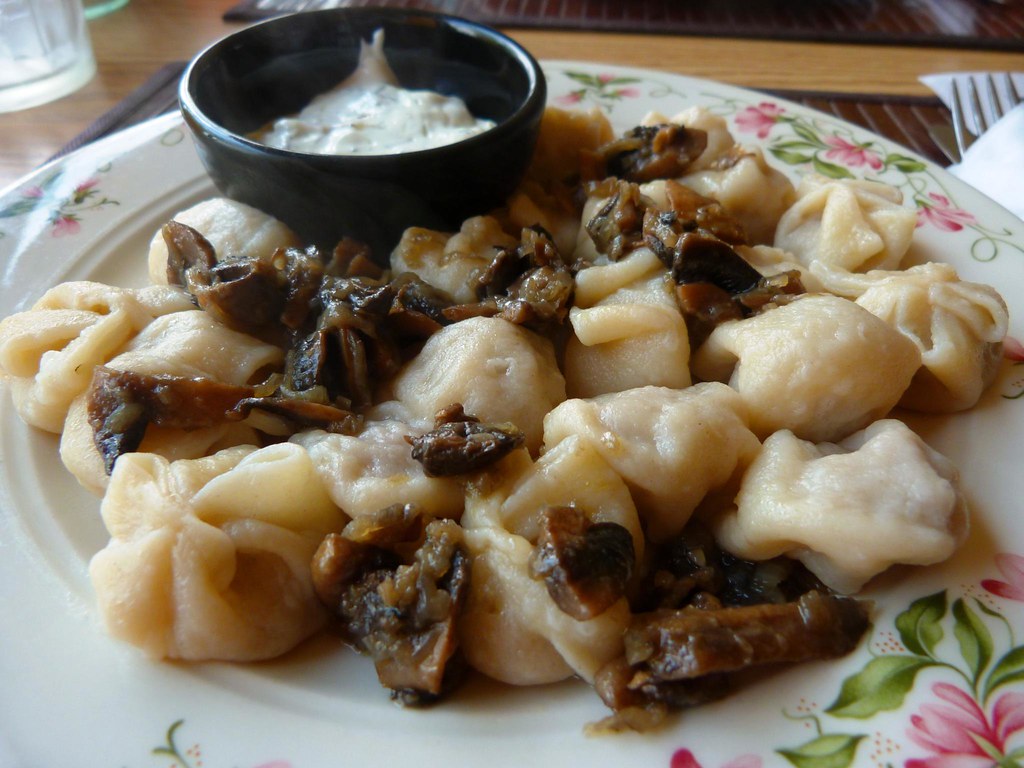In Siberia’s huge ice-kissing scene, these little delights are more than just a dish; they are a social trait and a culinary embrace. We ought to explore the realm of these delicious meat-filled dumplings, where flavors and customs collide, and every morsel reveals a tale.
The essence of Russian cuisine is Pelmeni. No matter the weather, they are family-friendly meals, comfort foods that remember your name, and dinners that can make you feel warm from the inside out. The inventiveness of Siberian chefs, who have devised ways to produce food that can endure extremely great distances despite having few resources, is evident in these hefty dishes.

From Home to Professional Kitchens
The tale of the Pelmeni’s journey from Siberia to our kitchens is as old as the maritime routes connecting ancient China with the Russian hinterlands if nothing else. Pelmeni’s simplicity and ability to capture the essence of home in their unvarnished exterior are what make them so magnificent. They are a harmonious picture, often made by family members, with each one overlaying and squeezing a line in the texture of a shared culinary heritage.
Whatever the case, we must not forget that Pelmeni is sensible. These dumplings were designed to withstand the deep freeze, a typical protective tactic that Siberian winters provided in excess. Pelmeni could be produced in vast quantities, stored with ease, and then bubbled perfectly when the time came. It should come as no surprise that they have become the most beloved frozen dish in Russia, a staple that transcends taste and time.
The Art of Pelmeni Making
We ought to have a serious conversation about the true issue. The traditional pelmeni filling is a substantial mixture of pork and hamburger that is cooked with salt, pepper, onions, and garlic. It’s an understated yet eye-catching filling with a distinct flavor profile that seems satisfying. Additionally, local varieties are abundant, ranging from chicken and mushrooms in one place to lamb and venison in the Northeast, all while adhering to the exceptional mix guidelines.
Making Pelmeni is a ballet between filling and mixture, balancing flavors and textures to create the perfect snack. The tender, pliable batter serves as the platform for the succulent, flavorful meat. Furthermore, a continual source of both blessing and agony produces delicious profits, even though the cycle may initially seem overpowering. Making Pelmeni is a contemplative and rebalancing activity, regardless of whether you’re using a traditional form or shaping each dumpling by hand.

Ingredients and Preparation
Dough:
- 2 ½ cups all-purpose flour
- 1 teaspoon salt
- 1 large egg

Filling:
- ½ pound ground beef
- ½ pound ground lamb
- 1 small onion, finely chopped
- 2 cloves garlic, minced
- Salt and pepper to taste
- Fresh parsley and dill (optional)
It is time to start cooking it when the ingredients are ready:
- Combine flour and salt in a bowl. Add the egg and mix with your hands or a food processor. Gradually add cold water until the dough comes together. Knead until smooth and elastic. Let it rest under a tea towel for 30 minutes.
- In a bowl, mix the ground beef, pork, onion, garlic, salt, and pepper. Add fresh herbs if using. Ensure the meat is finely mixed to create a consistent filling.
- On a floured surface, roll out the dough until it is thin but not transparent. Use a cookie cutter or the rim of a glass to cut out circles.
- Place a small spoonful of filling in the center of each circle. Fold the dough over to create a half-moon shape and pinch the edges to seal. For a decorative touch, you can create a ruffled edge by pinching and twisting the dough.
- If you have a mold, lay the dough over the mold, fill each cavity with meat, cover with another layer of dough, and roll over the top with a rolling pin to cut out the dumplings.
- Bring a large pot of salted water to a boil, adding a couple of bay leaves for extra flavor. Drop in the pelmeni and cook until they float to the surface, then give them an additional 2-3 minutes (3-5 minutes for frozen pelmeni).
- Frying (Optional): For added texture, pan-fry the boiled pelmeni in butter until golden and crispy.
The recipe source is available: https://www.foodnetwork.com/recipes/siberian-pelmeni-recipe-1909496
Enjoying Pelmeni
Pelmeni are quite adaptable when it comes to serving. Here are a few popular ways to enjoy them:
- Classic: Serve with a dollop of sour cream and fresh dill.
- Hearty Soup: Add boiled pelmeni to a broth for a comforting soup.
- Rich and Indulgent: Drizzle with brown butter and a sprinkle of herbs.
- Tangy Twist: Pair with Dijon mustard or vinegar for a sharp flavor contrast.
Storing Leftovers
The cooler’s boss is Pelmeni. Sprinkle the uncooked Pelmeni with flour and arrange them in a single layer on a baking sheet to store. After freezing, store them for up to six months in a sack or holder. Depending on the situation, cook them straight from the freezer.

A Culinary Tradition to Treasure
In addition to being a meal, preparing Pelmeni at home allows you to engage with traditional cooking techniques and create enduring memories with your loved ones. The world of Pelmeni Siberia promises a sense of fulfillment, shock, and a rich and varied customs that are as rich and varied as its birthplace, regardless of whether you are a fan of well-prepared dumplings or an inquisitive culinary pilgrim. Plan to be moved by the simple yet amazing fun of handcrafted Pelmeni, and concentrate on polishing your surface.
Related posts:
Siberian Dumplings Pelmeni
Pelmeni, Siberian Meat Dumplings
A Primer on Pelmeni and Vareniki: How to Make, Cook and Serve




